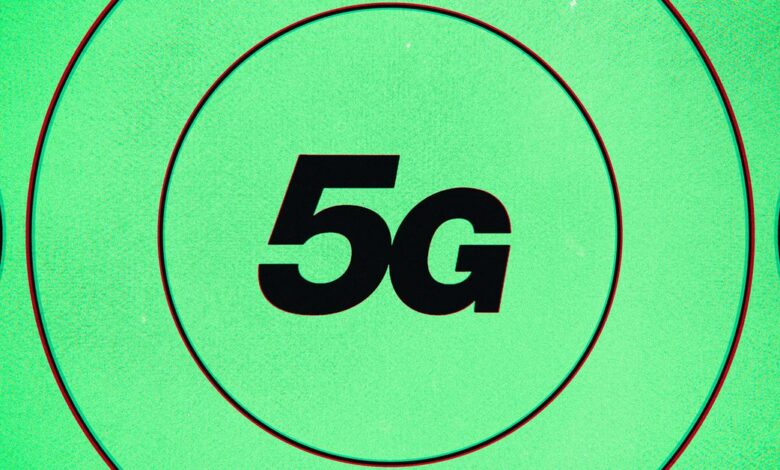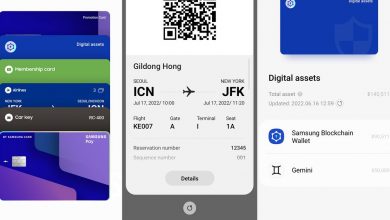The FAA, AT&T, and Verizon are getting closer to a solution for their 5G mess

[ad_1]
Regulators, carriers, and the airline industry seem to be figuring out the details surrounding the rollout of C-band 5G and its potential effects on air travel. According to the Federal Aviation Administration’s latest statement, “through continued technical collaboration, the FAA, Verizon, and AT&T have agreed on steps that will enable more aircraft to safely use key airports while also enabling more towers to deploy 5G service.”
Carriers “have provided more precise data about the exact location of wireless transmitters and supported more thorough analysis of how 5G C-band signals interact with sensitive aircraft instruments,” according to an FAA statement released on Friday, which you can read in full below. Before AT&T and Verizon launched their upgraded cell tech last week, there were concerns from the FAA and airline industry that radar altimeters, which are vital instruments used to safely land planes in low visibility conditions, would improperly pick up the cell signals and give out inaccurate readings.
To help alleviate these fears, carriers agreed to further expand the agreed-upon buffer zones around certain airports, which caused a slight dip in the number of people who benefited from the upgraded service in some cases. Both AT&T and Verizon expressed frustration with the FAA while doing so, though. Now, it seems as if there’s more cooperation — the FAA says it used data provided by the carriers to determine “that it is possible to safely and more precisely map the size and shape of the areas around airports where 5G signals are mitigated, shrinking the areas where wireless operators are deferring their antenna activations.”
This, in turn, should “enable the wireless providers to safely turn on more towers as they deploy new 5G service in major markets across the United States,” according to the regulator. The CTIA, an advocacy group for cell carriers, told The New York Times that the deals being made are “a positive development that highlights the considerable progress the wireless industry, aviation industry, FAA and FCC are making to ensure robust 5G service and safe flights.” A statement the Times obtained from a group representing the airlines seemed to largely agree, though it mentioned that there’s still “much work still to be done” before there’s “a more efficient permanent solution.” (Regional airlines which service rural airports and connecting flights have also sounded the alarm that the current situation isn’t exactly sustainable.)
It’s taken a while to get to this point. In the run-up to the carriers turning on their C-Band equipment, there were last-minute delays and agreements, and airline groups and CEOs warned of potentially “catastrophic” consequences. On Friday, Brian Fung released an excellent report for CNN explaining why everything seemed to fall apart at the seams at the last moment.
The report is well worth a read for anyone looking to understand how this could’ve happened, but to make a long story short, it comes down to a breakdown in communications between two government agencies, the FCC and the FAA (though there are others in the mix as well). The FCC, which was in charge of selling carriers access to the C-Band spectrum in the first place, didn’t get actionable input from the FAA while it was in its planning and rule-making phase, despite the air safety regulator making several statements about it in public. There are quite a few reasons this happened, from an agency failing to pass on a letter from the FAA to the FCC to that letter being written almost a year late.
Fung also explained in a Twitter thread that the FAA didn’t have access to critical data from carriers. Based on the statement from the regulator today, this seems to be resolved (or is at least in the process of being resolved). But before the two industries started talking to each other, there seemed to be a good deal of confusion. “There were a lot of ‘aha’ moments on both sides of the equation” when regulators and companies started actually listening to each other, according to a source Fung cites in his report.
Building off the report, analyst Harold Feld goes further into detail about how a third agency intervened and how it could’ve been difficult for the FAA to figure out what the proper lines of communication with the FCC even were.
This is important because NTIA is supposed to be the agency that ensures fed spectrum policy is unified. While NTIA does represent the other agencies to FCC, it is not just a “dumb pipe.” /2
— (((haroldfeld))) (@haroldfeld) January 28, 2022
John Leibovitz, a former deputy chief and special advisor at the FCC, also weighed in with his own Twitter thread, explaining that the bungled process meant that the FCC couldn’t use money to fix the problem (perhaps by setting aside cash that airlines could’ve used to upgrade altimeters that weren’t compliant). He also explains how a tangle of responsibilities and roles and a lack of requirements for certain documentation around how altimeters act as receivers made things cloudier for regulators.
3/ Would it have helped for aviation to have a pot of money — conditioned on a strict timetable — to upgrade altimeters? Probably. But the time to do this was before the rules were set, under existing authority. Afterward, the only authority that can move money is Congress.
— John Leibovitz (@JohnLeibovitz) January 28, 2022
While this likely won’t be the last we hear of the 5G / airline situation, hopefully, the actual communication between industries and regulators means that a resolution is on the horizon. In any case, the FAA knowing where AT&T and Verizon’s towers actually are should make it easier to make decisions when the carrier’s deferments are set to expire in July.
The FAA’s January 28th statement:
Through continued technical collaboration, the FAA, Verizon, and AT&T have agreed on steps that will enable more aircraft to safely use key airports while also enabling more towers to deploy 5G service. The FAA appreciates the strong communication and collaborative approach with wireless companies, which have provided more precise data about the exact location of wireless transmitters and supported more thorough analysis of how 5G C-band signals interact with sensitive aircraft instruments. The FAA used this data to determine that it is possible to safely and more precisely map the size and shape of the areas around airports where 5G signals are mitigated, shrinking the areas where wireless operators are deferring their antenna activations. This will enable the wireless providers to safely turn on more towers as they deploy new 5G service in major markets across the United States. The FAA continues to work with helicopter operators and others in the aviation community to ensure they can safely operate in areas of current and planned 5G deployment.
[ad_2]
Source link




